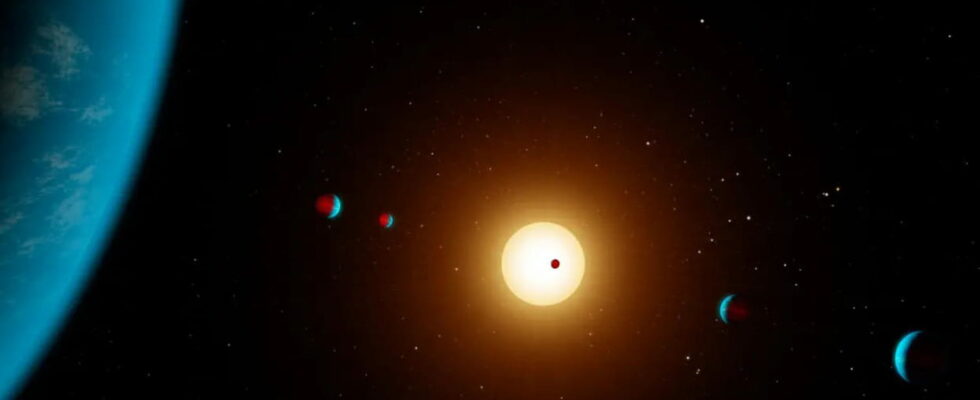The event occurs rarely, don’t miss the alignment of six planets visible Monday June 3 in our sky.
It’s the established expression when a project goes off without a hitch: the alignment of the planets. Monday June 3, it will no longer be a metaphor, but indeed a reality since astrophysicists announce that six planets will be aligned! These are Mercury, Mars, Jupiter, Saturn, Uranus and Neptune. The Anglo-Saxons speak of a “Parade of the Planets” as this event is as rare as it is spectacular.
But what do we mean by “alignment of the planets”? First, we must remember that in our solar system, planets like the Earth constantly revolve around the Sun. By rotating, over time, they end up finding themselves on the same line of sight from Earth. This is what will happen on June 3, in the early morning for the French: these six planets, which are all orbiting on the same plane, will in fact be on the same side of the Sun.
As each planet moves at a different speed depending on its distance from the Sun, this “alignment” with the six planets will be of relatively short duration. When we write “relative”, it’s because everything started on May 31, and there will be a catch-up session on June 4, or even June 5. On the other hand, what is certain is that the phenomenon will really be most visible on the morning of the 3rd.

Of course, you will need powerful binoculars or better a telescope to enjoy the spectacle and take a group shot. But… to the unaided eye, it will already be possible to see several of them. Knowing that first Mercury and Jupiter will be very low in the sky. Very close to sunrise. Then, Uranus will be quite dark, while Neptune will be no more visible than a star since it is located some four billion kilometers from Earth. The good news is that Mars and Saturn should therefore be visible to the naked eye. Obviously provided that the weather is suitable since there must be a minimum of clouds…
To help us spot them, in case of clear skies, we can count on the Moon. Since Friday, Earth’s satellite has been just below Saturn, and each day it will descend along this alignment of planets. Monday June 3, early in the morning, the Moon will be under Mars. Higher in the sky there will be Saturn, and between the two, barely visible, will be Neptune. Below the Moon, going down towards sunrise, we will find Mercury and Jupiter. Like Neptune, Uranus will be difficult to distinguish.
What is exceptional this June 3 is that this “planetary parade” concerns six planets. Usually, and this happens several times a year, we can distinguish two or four planets at the same time. From five planets, this becomes rarer, and six is downright exceptional since we must remember that our solar system has eight planets. And since the Earth obviously cannot appear in the sky, all that is missing is Venus. The latter is the first to appear at nightfall, and to disappear at sunrise. This is why it is not visible to us Earthlings.
